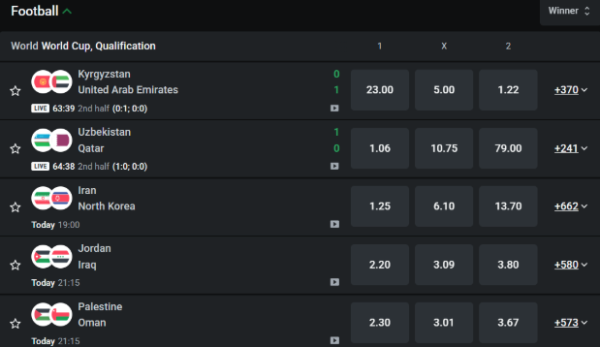If you’re new to sports betting or looking to sharpen your strategy, understanding what a betting system is can be a game-changer. Whether you’re placing bets for fun or aiming for long-term profit, a structured system can provide consistency, reduce risk, and boost your chances of success.
In this guide, we’ll break down the definition of a betting system, examine different types, show you how to use them properly, offer real-life examples, and provide pro tips to enhance your betting results.

What is a Betting System?
A betting system is a structured approach or method used to place bets based on predetermined rules, statistics, or patterns. Unlike random betting or betting based on intuition, a betting system relies on logic, math, and discipline.
Key Characteristics:
- Repeatable: A system can be applied over and over under similar conditions.
- Objective: It minimizes emotional betting decisions.
- Strategic: It often incorporates risk management and bankroll allocation.
Some systems aim to maximize profits, while others focus on minimizing losses or increasing the win ratio over time.
Types of Betting Systems
There are many betting systems, each with its own pros and cons. Below are the most popular categories used in sports betting.
1. Progressive Betting Systems
These systems adjust your stake size based on previous outcomes.
- Martingale: Double your bet after a loss. Goal: Recover losses and make a profit equal to your original stake.
- Fibonacci: Bet according to the Fibonacci sequence after a loss. Less aggressive than Martingale.
- D’Alembert: Increase bets after a loss and decrease after a win. A safer alternative to Martingale.
Best for: Bettors with a large bankroll.
Risk: Can lead to massive losses if you hit a losing streak.
2. Flat Betting Systems
You bet the same amount every time, regardless of past wins or losses.
- Encourages discipline
- Simplifies bankroll management
- Minimizes risk of large losses
Best for: Beginners and long-term bettors
Risk: Smaller profits over time unless your win rate is high
3. Percentage Betting Systems
You stake a fixed percentage of your bankroll on each bet.
- Common choice: 1% to 5% of your bankroll
- Adjusts naturally as your bankroll grows or shrinks
Best for: Smart bankroll control
Risk: Less aggressive profit-making strategy
4. Value Betting Systems
This system is based on identifying “value bets” — bets where the odds are higher than the true probability of the outcome.
- Requires deep statistical analysis or strong market knowledge
- Often used by professional sports bettors
Best for: Experienced bettors
Risk: Difficult to identify true value consistently
5. Arbitrage Betting Systems
This strategy exploits odds discrepancies between different bookmakers to guarantee a profit.
- Requires accounts on multiple sportsbooks
- Time-sensitive and often monitored by bookies
Best for: Advanced bettors with tools
Risk: Bookmaker restrictions or canceled bets
How to Use a Betting System
Implementing a betting system effectively involves more than just knowing the rules. Here’s a step-by-step guide to get started:
Step 1: Choose Your Goal
Decide if you want to:
- Maximize profit
- Minimize risk
- Build a consistent winning pattern
Step 2: Select a Suitable System
Match your goal with a compatible system. For example:
- Flat or Percentage System → Good for consistent profit and low risk
- Martingale or Fibonacci → Suitable if you want faster returns but can handle volatility
Step 3: Set a Budget
Define your bankroll — the total amount you’re willing to bet. Stick to it religiously.
Step 4: Track Your Bets
Use spreadsheets or apps to monitor your:
- Wins/Losses
- Bet amounts
- Odds
- ROI (Return on Investment)
Step 5: Evaluate and Adapt
After a sample of 100+ bets, analyze what worked and what didn’t. Refine your system accordingly.
Examples of Betting Systems in Action
Here are a few practical examples to illustrate how systems work in real sports betting scenarios:
Example 1: Flat Betting System
- Budget: $1,000
- Stake per bet: $50
- Bets placed: 20
- Wins: 12 at +100 odds
- Profit: $100
This approach keeps your risk low and results easy to manage.
Example 2: Martingale System
- Initial bet: $10
- After 4 consecutive losses: Bet = $160
- Win on 5th attempt = $160 → Covers all losses + $10 profit
High risk, but effective short-term when win probability is decent.
Example 3: Value Betting
- You calculate Team A has a 60% chance to win
- Bookmaker offers +120 odds (implied probability: ~45%)
- You place the bet because the true odds suggest value
Repeat this enough times, and you’re statistically likely to profit.
This kind of strategy is commonly used by advanced players on trusted platforms such as LEONBet, where competitive odds and a wide market range make it easier to apply value betting principles consistently.
Best Tips for Using a Betting System
Even the most solid system can fail if poorly executed. Here are expert tips to boost your success:
Stay Disciplined
Don’t abandon your system after a few losses. Consistency is key.
Don’t Chase Losses
Avoid emotional betting. Stick to your plan.
Use a Betting Journal
Track every bet you make to find patterns, mistakes, and successes.
Know the Sport
Specializing in a sport increases your accuracy in odds assessment and system choice.
Avoid Parlays (unless it’s part of the system)
Most betting systems work best on single bets, not accumulators.
Stay Updated
Odds change based on injuries, weather, and news. Keep yourself informed.
FAQ: What is a Betting System?
What’s the safest betting system?
The flat betting system is the safest. You risk the same amount on each bet, reducing the chance of massive losses.
Can a betting system guarantee profit?
No system guarantees long-term profit due to the unpredictable nature of sports and variance. However, a smart system increases your chances of sustainable success.
What system is best for beginners?
Start with flat or percentage betting systems. They are easy to follow and help build discipline.
Are betting systems legal?
Yes, betting systems are legal. But abusing bookmaker rules, such as arbitrage with multiple accounts, can lead to bans.
Can I use systems on live betting?
Some systems, like percentage betting, can be adapted to live/in-play betting, but speed and decision-making become more crucial.
Conclusion
A betting system isn’t a magical way to get rich, but it’s a powerful tool to bring structure, discipline, and smarter risk management to your betting strategy. By understanding different types of systems and applying them based on your goals, you’ll be better equipped to make calculated bets and potentially boost your profitability over time.
Whether you’re a casual bettor or a serious punter, building a strong foundation with a proven betting system is one of the best ways to take your sports betting to the next level.




